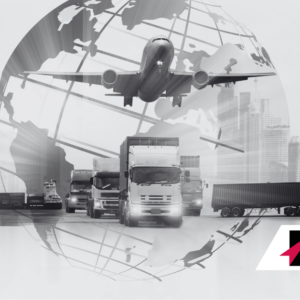The logistics industry is continuously evolving, driven by advancements in technology, changing consumer expectations, and global economic shifts. As we step into 2025, these transformations are more apparent than ever. Businesses looking to stay competitive must understand and adapt to the latest trends shaping the logistics landscape.
Here are the top logistics trends to watch in 2025:
1. Automation and Artificial Intelligence (AI) Integration
Automation continues to revolutionize logistics, with AI playing a central role in optimizing operations. In 2025, expect to see widespread adoption of AI-driven tools for route optimization, demand forecasting, and warehouse management. Autonomous vehicles and drones for last-mile delivery are becoming more mainstream, reducing delivery times and operational costs. Companies leveraging AI to enhance efficiency and accuracy will gain a significant edge.
2. Sustainability and Green Logistics
Sustainability is no longer a buzzword but a business imperative. Customers and regulators alike demand greener supply chains. In response, companies are investing in electric and hydrogen-powered delivery fleets, optimizing packaging to reduce waste, and adopting carbon-neutral strategies. Warehouses powered by renewable energy and the use of circular supply chains are expected to become standard practices.
3. E-commerce and Omnichannel Logistics
The e-commerce boom shows no signs of slowing down, and logistics companies must keep pace. In 2025, omnichannel logistics—seamlessly integrating online and offline sales channels—will be critical. Companies will invest in micro-fulfillment centers closer to urban centers, ensuring faster delivery times and enhanced customer experiences. Flexible delivery options, such as same-day and scheduled deliveries, will continue to expand.
4. Supply Chain Resilience and Risk Management
The disruptions of recent years have underscored the importance of supply chain resilience. In 2025, businesses will prioritize risk management strategies, including diversifying suppliers, nearshoring production, and using predictive analytics to identify potential disruptions before they occur. Collaborative partnerships and enhanced transparency across supply chains will also play a pivotal role in mitigating risks.
5. Blockchain for Enhanced Transparency
Blockchain technology is gaining traction as a tool for increasing transparency and trust in supply chains. In 2025, more companies will use blockchain to track goods from origin to destination, ensuring authenticity and reducing fraud. This technology also facilitates faster and more secure payment processes, improving efficiency in global trade.
6. The Rise of Robotics in Warehousing
Robotics continues to transform warehousing operations. In 2025, expect to see warehouses employing advanced robotic systems for picking, packing, and inventory management. Collaborative robots (cobots) that work alongside humans will enhance productivity and reduce labor shortages. These innovations will lead to faster order processing and reduced operational costs.
7. Focus on Data-Driven Decision-Making
The logistics industry is becoming increasingly data-driven. In 2025, companies will rely on advanced analytics and real-time data to make informed decisions. Internet of Things (IoT) devices, such as smart sensors and trackers, will provide valuable insights into fleet performance, inventory levels, and shipment conditions. Leveraging data effectively will be a key differentiator for businesses aiming to improve efficiency and customer satisfaction.
8. Hyper-Personalized Customer Experiences
Customer expectations are higher than ever, and personalization is the key to meeting them. Logistics companies will use AI and data analytics to tailor services, such as delivery preferences and proactive communication, to individual customers. Businesses that prioritize customer-centric strategies will build loyalty and stand out in a competitive market.
9. Globalization and Regionalization Balancing Act
Global trade remains a cornerstone of logistics, but regionalization is gaining prominence as companies seek to mitigate risks associated with geopolitical tensions and supply chain disruptions. In 2025, businesses will strike a balance between global and regional supply chains, leveraging technology to adapt quickly to changing market conditions.
10. Enhanced Collaboration Across the Supply Chain
Collaboration is becoming a critical component of successful logistics operations. In 2025, companies will increasingly adopt collaborative technologies and platforms that enable seamless communication and coordination with partners, suppliers, and customers. Shared data and resources will improve efficiency and drive innovation across the supply chain.
Preparing for the Future
The logistics trends of 2025 highlight the importance of adaptability and innovation. Companies that invest in technology, prioritize sustainability, and focus on customer-centric strategies will be well-positioned to thrive in this dynamic industry.
Your Trusted Partner
At Red Arrow Logistics, we are committed to staying ahead of these trends to deliver exceptional value to our clients.
Red Arrow offers the scale and scope of services including air, ocean, and ground transportation to meet the budget and schedule requirements of the largest and smallest companies alike. If we can be of assistance, please email us at info@redarrowlogistics.com or give us a call at 425-747-7914.





